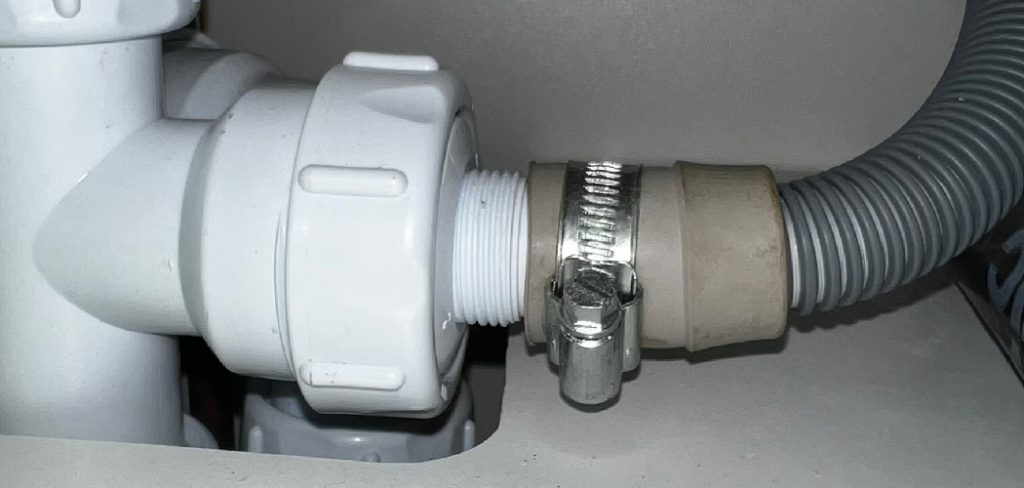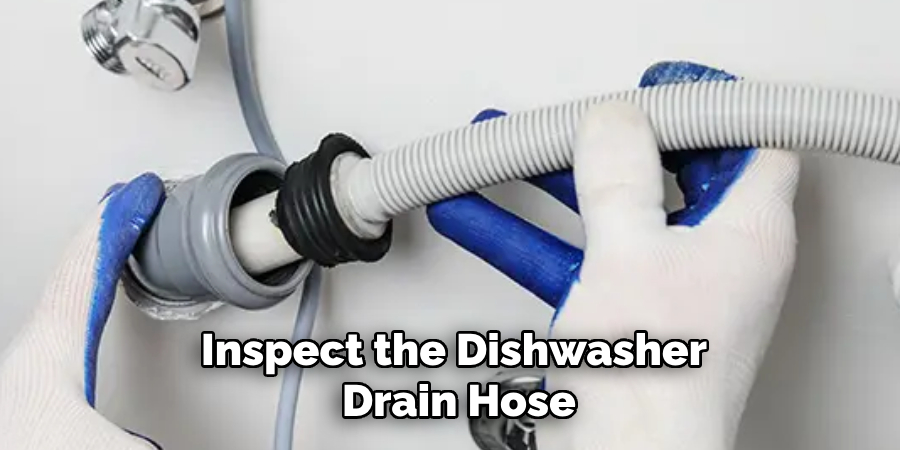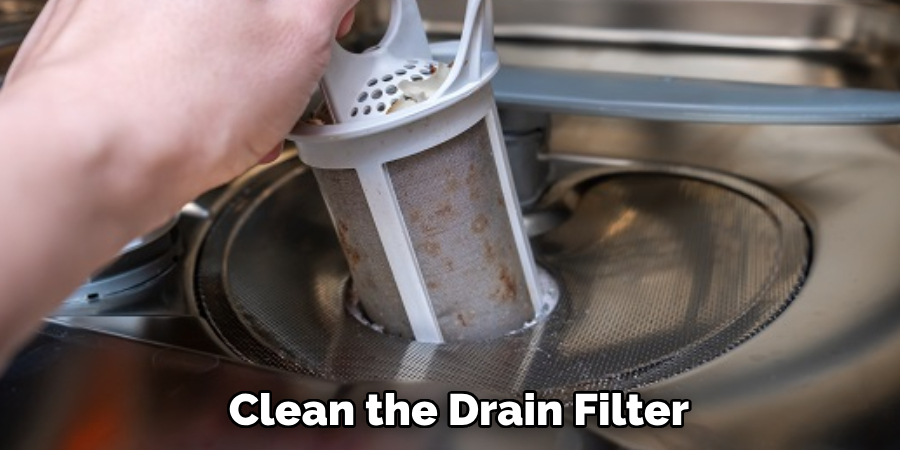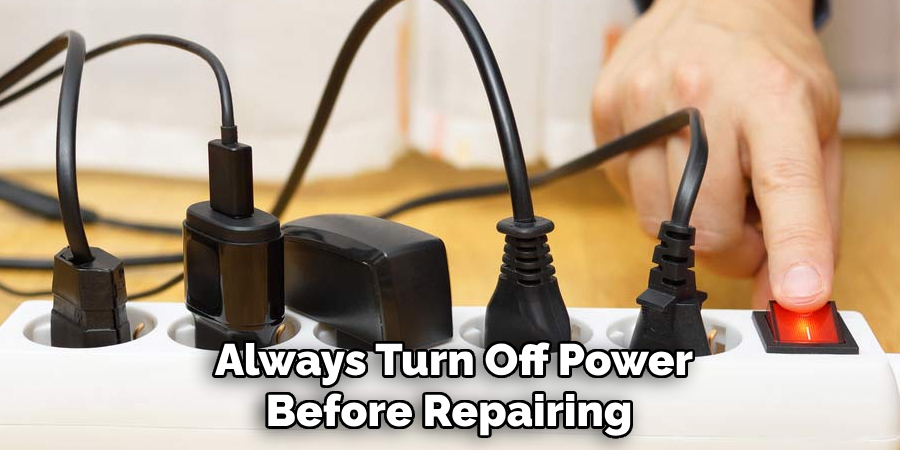A clogged drain hose in your dishwasher can lead to standing water, unpleasant odors, and decreased efficiency. Fortunately, addressing this issue is a straightforward process that can often be completed without the need for professional assistance. In this guide, we’ll walk you through the steps of how to unclog drain hose on dishwasher, helping restore your dishwasher to optimal performance.

Signs of a Clogged Drain Hose
Identifying the signs of a clogged drain hose early can help you address the issue before it worsens. Common symptoms include:
- Standing Water at the Bottom of the Dishwasher: When water fails to drain properly, it will accumulate in the bottom of the appliance after a wash cycle.
- Slow Drainage: The dishwasher may take longer than usual to drain, signaling a potential blockage.
- Unpleasant Odors: Food particles trapped in the hose can cause foul smells to emanate from the dishwasher.
- Gurgling or Unusual Noises: Blockages can create resistance in water flow, leading to strange sounds during the draining process.
- Dishwasher Error Codes: Many modern dishwashers are equipped with systems that display error codes when drainage issues occur.
If you notice any of these warning signs, it’s essential to inspect and address the drain hose promptly to avoid further complications.
Tools and Supplies Needed
Before you begin unclogging your dishwasher’s drain hose, gather the following tools and supplies to make the process smoother and more efficient:
- Screwdriver: Depending on your dishwasher model, you may need a Phillips or flathead screwdriver to remove panels and access the drain hose.
- Bucket or Shallow Pan: To catch any water that might spill out during the process.
- Towels or Rags: For wiping up water and keeping the area dry.
- Needle-Nose Pliers: Useful for removing debris or detaching clamps from the hose.
- Pipe Cleaner or Long Flexible Brush: To help remove blockages inside the drain hose.
- Vinegar And Baking Soda (Optional): For cleaning and deodorizing the hose after removing the clog.
- Replacement Drain Hose (optional): If the hose is damaged or beyond cleaning, you may need to install a new one.
Having these tools and supplies ready will help ensure a smoother, less stressful experience as you work to unclog your dishwasher’s drain hose.
10 Methods How to Unclog Drain Hose on Dishwasher
1. Inspect the Drain Hose for Kinks or Obstructions
Before assuming the hose is clogged, check for kinks, twists, or blockages that may restrict water flow. The drain hose typically runs from the back of the dishwasher to either the sink drain or garbage disposal.
If the hose is bent or pinched, it can prevent proper drainage. Gently straighten the hose and see if that resolves the problem. If the dishwasher still does not drain, proceed with further troubleshooting.

2. Run a Dishwasher Drain Cycle to Identify the Issue
Before disassembling the drain hose, try running a drain cycle to determine the severity of the clog. If water drains slowly or remains at the bottom of the dishwasher, it confirms a blockage in the hose or drain system.
You can also listen for any gurgling sounds or unusual noises, which may indicate trapped debris. If the drain cycle fails, you will need to manually clear the obstruction.
3. Disconnect the Drain Hose from the Dishwasher
To effectively remove a clog, you may need to disconnect the drain hose for a thorough cleaning. Follow these steps:
- Turn off the power to the dishwasher by unplugging it or shutting off the circuit breaker.
- Turn off the water supply to prevent leaks.
- Locate the drain hose connection (typically at the back of the dishwasher).
- Use pliers or a screwdriver to loosen the hose clamp and detach the hose.
Have a bucket and towels ready to catch any residual water that may spill from the hose.
4. Remove and Clean the Drain Filter
A clogged dishwasher filter can contribute to drain hose blockages. The filter is usually found at the bottom of the dishwasher and traps food particles and grease before water exits through the drain hose.
- Twist And Remove The Filter according to your dishwasher’s manual.
- Rinse it Under Warm Water with dish soap to remove built-up debris.
- Use a Soft Brush to scrub away stubborn grime.
A clean filter allows water to flow freely and prevents future drain hose clogs.

5. Use a Plunger to Clear the Clog
If the drain hose is still attached, you can try using a plunger to dislodge the blockage.
- Fill the bottom of the dishwasher with a few inches of water.
- Place a cup plunger over the dishwasher drain.
- Plunge vigorously to create pressure and push out the clog.
If the clog is in the hose, this method may force the obstruction out without needing to remove the hose entirely.
6. Flush the Drain Hose with Hot Water and Vinegar
A mixture of hot water and vinegar can break down grease, soap scum, and food debris inside the drain hose.
- Boil a pot of water and mix it with one cup of white vinegar.
- Detach the drain hose and carefully pour the solution through the hose.
- Let it sit for 15–30 minutes to dissolve buildup.
- Rinse the hose thoroughly with clean water before reattaching it.
This method is especially effective for minor clogs and grease buildup.
7. Use a Drain Snake to Remove Stubborn Clogs
If the clog is deep inside the drain hose, a drain snake (plumbing auger) can help break it apart.
- Insert the flexible drain snake into one end of the hose.
- Rotate the handle to push the coil through the blockage.
- Once you feel resistance, twist and pull to remove the clog.
- Flush the hose with water to ensure it is completely clear.
Drain snakes work well for hair, food debris, and tough blockages that cannot be dissolved with vinegar.
8. Blow Out the Clog with an Air Compressor
For a fast and powerful method, use an air compressor to force the clog out.
- Attach the air compressor nozzle to one end of the hose.
- Secure it tightly so air pressure does not escape.
- Turn on the compressor and blast air through the hose.
- Check if debris comes out the other end.

If you see dirt and food particles being expelled, the clog is being successfully removed. Repeat the process until the hose is clear.
9. Use a Baking Soda and Vinegar Mixture
A natural and chemical-free way to unclog the drain hose is with baking soda and vinegar.
- Mix one cup of baking soda with one cup of vinegar.
- Pour the solution into the drain hose and let it fizz for 30 minutes.
- Flush with hot water to wash away the loosened debris.
This method helps break down organic material and soap scum, making it an excellent maintenance solution.
10. Replace the Drain Hose if Necessary
If none of the above methods work, the drain hose may be damaged, worn out, or too clogged to clean. In this case, replacing the hose is the best option.
- Purchase a new dishwasher drain hose compatible with your model.
- Remove the old hose and connect the new one securely.
- Tighten the hose clamps to prevent leaks.
- Test the dishwasher by running a drain cycle.
Installing a new drain hose ensures optimal drainage and prevents future clogs.
Things to Consider
When working on a dishwasher’s drain hose, it is important to keep a few considerations in mind to ensure safety and effectiveness:
- Safety First: Always turn off the power and water supply before beginning any repairs. This prevents electrical hazards and water leaks.
- Proper Tools: Having the right tools, such as pliers, screwdrivers, and a bucket, can help make the process easier and prevent accidental damage.
- Refer to the Manual: Every dishwasher model has specific instructions for maintenance and repair. Consult the user manual for detailed guidance.
- Examine for Damage: While inspecting the drain hose, check for cracks, holes, or signs of wear that may require replacement instead of cleaning.

- Prevent Future Clogs: Regularly clean the filter and avoid overloading the dishwasher with food particles or grease to minimize the risk of clogs.
- Seek Professional Help: If you encounter persistent issues or feel uncertain about the process, consider hiring a professional technician to prevent further damage.
Taking these factors into account can save time and ensure a smooth repair process while maintaining the longevity of your dishwasher.
Conclusion
Dealing with a clogged dishwasher drain hose can seem daunting, but with the proper tools and a step-by-step approach, it’s a manageable task. By following the outlined methods, you can effectively identify and resolve the issue, ensuring your dishwasher operates efficiently. Regular maintenance, such as cleaning the filter and using natural solutions like vinegar and baking soda, can prevent future clogs and prolong the life of your appliance. If all else fails, replacing the drain hose provides a reliable solution. With these techniques, you can keep your dishwasher in top condition and your kitchen running smoothly. So, there you have it – a quick and easy guide on how to unclog drain hose on dishwasher.
Professional Focus
Angela Ervin, a former interior designer turned blogger, specializes in kitchen design and renovations. Through her website, she blends her passion for cooking with design expertise, sharing practical and creative ideas. Known for balancing functionality and beauty, Angela’s insightful content has made her a trusted voice in home design and lifestyle.
About the Author
Angela Ervin, an experienced interior designer and blogger, combines her passion for kitchen renovations with storytelling. Living in Petersburg with her family, she enjoys cooking and testing her projects firsthand. Known for her humor and relatable style, Angela shares creative, functional design insights through her content, making her a trusted voice in home design.
Education History
University: Virginia Commonwealth University
Degree: Bachelor of Fine Arts (BFA) in Interior Design
- Angela’s education at VCU focused on mastering core interior design principles, including spatial planning, color theory, materials selection, and sustainable design practices.
- She gained hands-on experience through studio projects and collaborative design exercises, which honed her ability to create functional and aesthetically pleasing environments.
- Her coursework also emphasized problem-solving and practical applications of design, preparing her for real-world projects like her self-directed kitchen renovations.
- The program’s strong foundation in both technical skills and creative expression shaped Angela’s ability to seamlessly integrate form and function in her work.
